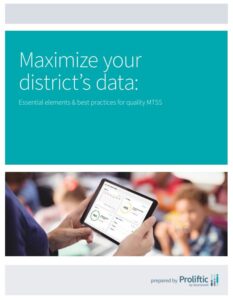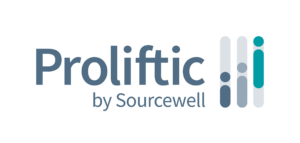Over the past two decades, Multi-Tiered System of Support (MTSS) and Response to Intervention (RTI) have emerged as a framework to improve outcomes for all students. By utilizing a data-based, decision-making model, educators are better equipped to match student needs.
A meta-analysis indicated that an RTI framework, implemented with fidelity, has an effect size of 1.09. According to education researcher and author John Hattie, this is equivalent to having learning rates accelerated by two to three years. Given the exceptional promise of positive student impact from this framework, many districts are eager to adopt these research-supported practices. However, schools are complex organizations. It can feel daunting to achieve high-quality implementation by all stakeholders needed to attain desired results.
One of the essential elements for implementing a quality MTSS program is effective aggregation and data availability.
Aggregating Multiple Data Points
Many districts identify with the concept of being “data-rich but information-poor.” While a great deal of student data is collected on a regular basis (e.g., enrollment, attendance, grades, test scores, discipline referrals, involvement in extracurriculars, intervention participation, etc.), it is often stored in separate, specialized locations with limited access. This separation often makes it difficult to aggregate and use available data in a holistic manner for individual students or the overall system. As they make decisions, stakeholders may not be aware of all readily available data or have time to seek out the data they need. Other times, access to longitudinal data or historic data for students is not easily accessible.
Streamline access with automated data integration
Using a secure data system that automatically pulls and aggregates data from multiple databases and files can provide streamlined access. It is helpful for districts to consider and define each data source they would like to use across domains (attendance, behavior, grades, test scores, social and emotional learning) within their MTSS framework and make plans for how the data will be brought into a central system, and how the data will be used. Think broadly about data sources that will help fully describe students within the context of their school experience, and those that reflect the priorities of the local community. If you have invested in gathering a piece of data, be sure it is loaded into your data management system so you can get the greatest value from the information collected.
For each source, consider:
- Is it a reasonably reliable and valid method for measuring student behavior?
- How will the data be collected (area of input)?
- How often will data be updated?
- How will the results be accessed by stakeholders across roles?
- Which targets or benchmarks will the district use for interpretation?
- What training will be needed for appropriate data use and interpretation?
Clearly defining data being used across domains within your MTSS framework—and a centralized system by which these data are collected, shared, and utilized—allow for better use of the data. This process of cataloguing all possible data sources may reveal data sets that are no longer considered useful or may uncover duplication in testing efforts. These insights offer an opportunity for districts to save time and money by streamlining the overall measurement plan by reducing unnecessary testing. This approach also benefits school and district leaders by creating visibility of data and enabling leaders to have confidence in it to make informed system-level improvements.
Commonly overlooked data to consider:
- Community service hours
- PACER results
- Student group membership (programs, teams, clubs)
- Survey results
- AP exam results
- Locally developed, formative assessment
Aggregating multiple data points is just one element of implementing quality MTSS/RTI. Discover the other essential elements and best practices we’ve identified for quality MTSS.


How, and where, does your district aggregate your whole-child data? What are you biggest obstacles?
Sponsored Content Disclaimer:
Sponsored Content in Partnership With NASSP
NASSP allows select groups to share information and thought leadership with our program audiences.

